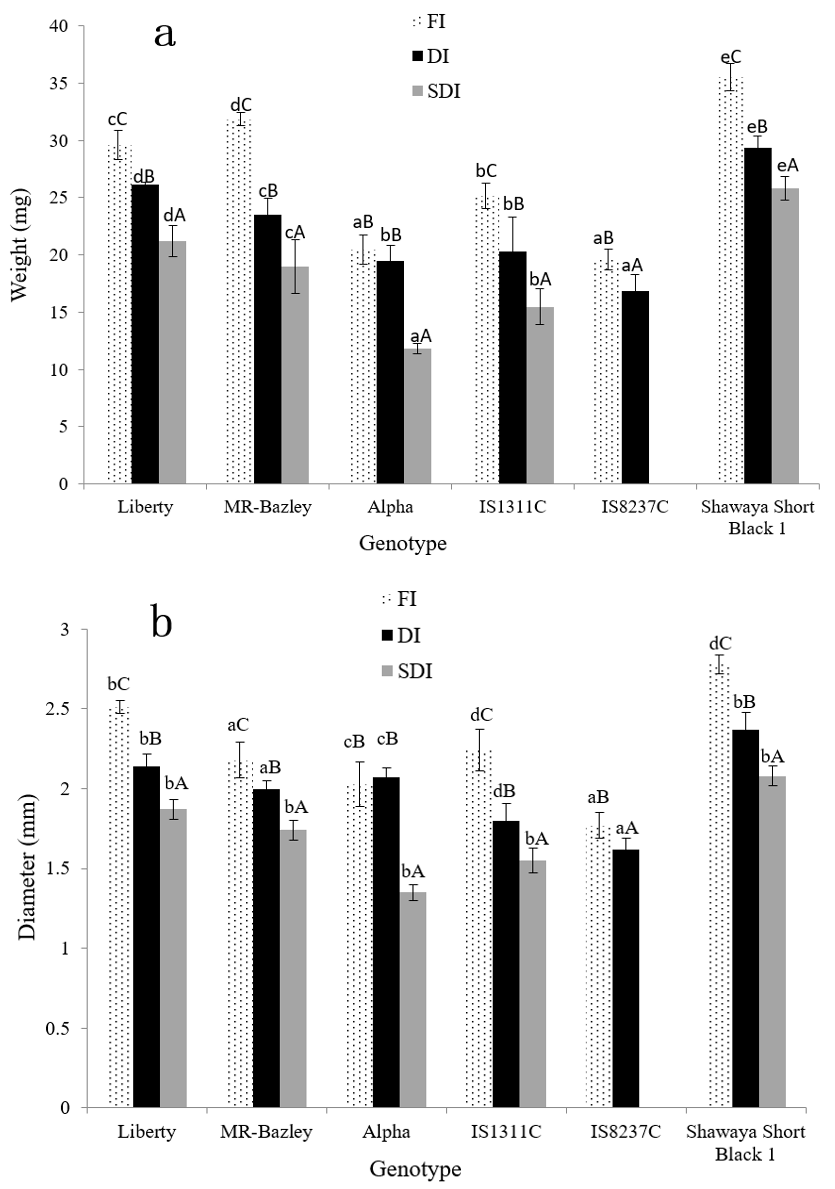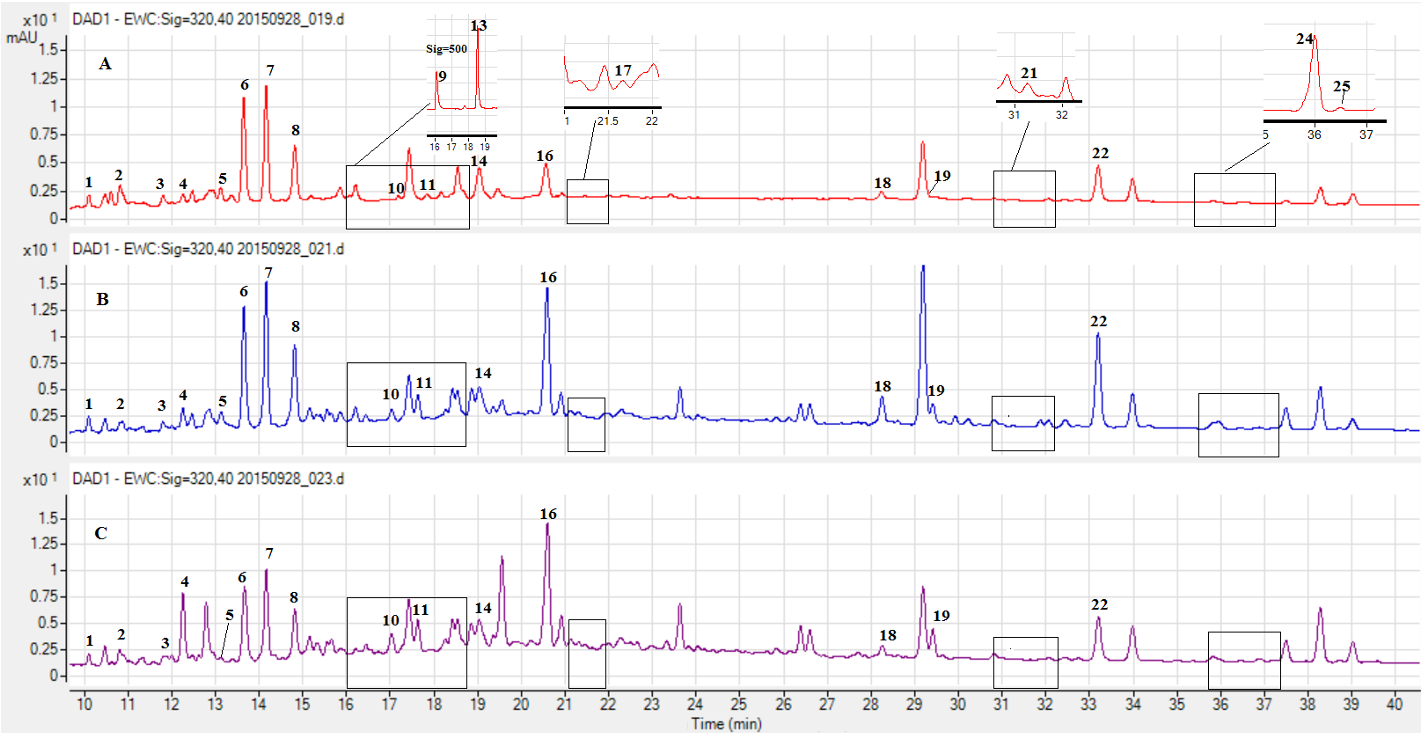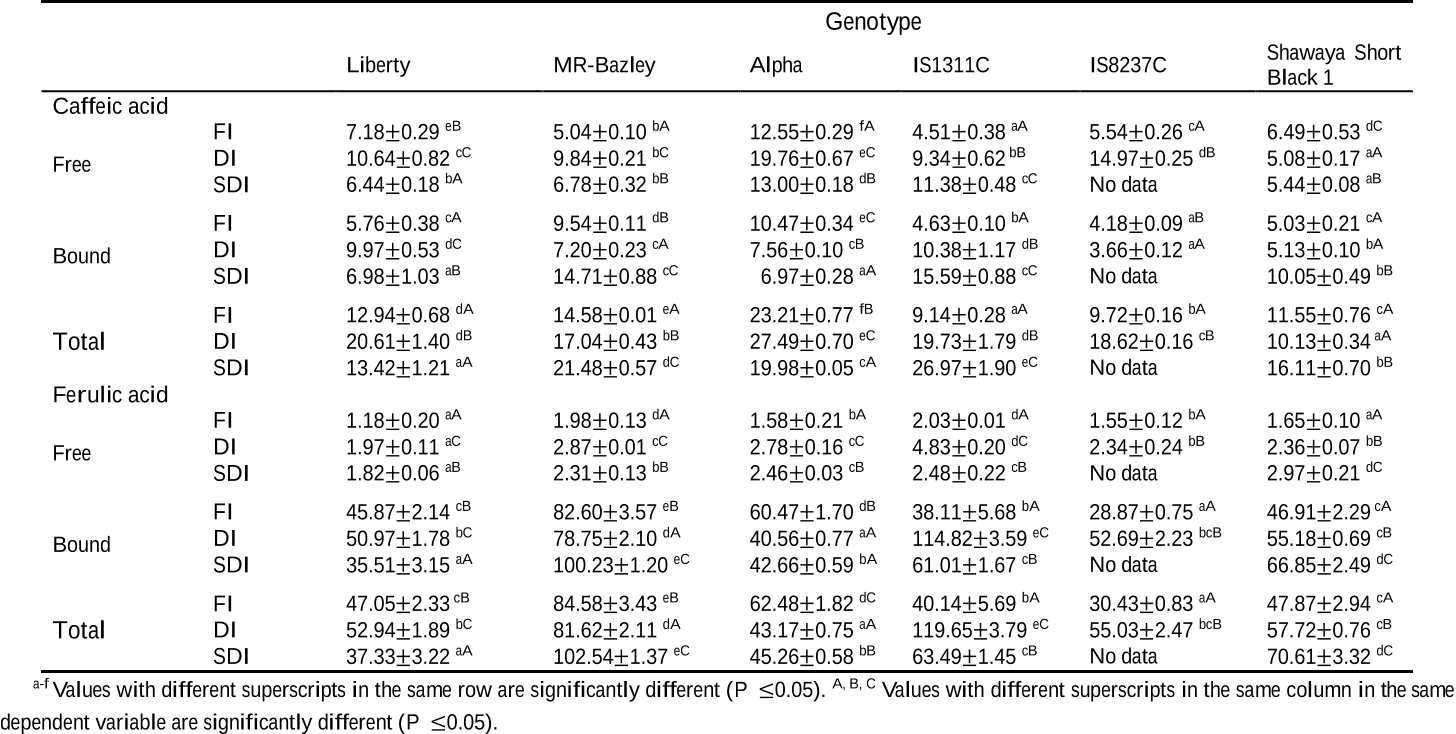Q2. How many polyphenols were identified in the sorghum extracts?
A total of eight 193 individual polyphenols, including ferulic acid, caffeic acid, luteolin, apigenin, 194 luteolinidin, apigeninidin, taxifolin and naringenin, were unequivocally identified and 195 another 17 tentatively identified.
Q3. Why is the number of people consuming sorghum growing in developed countries increasing?
the number of people consuming sorghum grain 40 is slowly but steadily increasing in developed countries mainly due to sorghum’s 41 gluten-free property and antioxidant potential from polyphenolic phytochemicals 42 (Taylor et al., 2006).
Q4. What is the effect of the high temperature on the biosynthesis of polyphenols in s?
As the sorghum was unable to regulate the severe water 335 stress, the high temperature might also have decreased the biosynthesis of 336 polyphenols, flavonoids and some individual polyphenols on the sorghum grain under 337 the SDI regime.
Q5. How many ethyl acetate fractions were added to the hydrolys?
The 138 hydrolysate was re-extracted with the 15 mL ethyl acetate four times more, and all 139 ethyl acetate fractions were combined and evaporated to dryness.
Q6. What is the valuable cereal crop in the world?
Sorghum (Sorghum bicolor (L.) Moench) is the fifth most valuable global cereal crop, 34 widely grown in semi-arid and arid regions of the world because of its tolerance to 35 drought and high temperatures (Taylor, Schober, & Bean, 2006).
Q7. What enzymes were shown to be catalysed by CHS and F3'H?
Synthesis of 308 3-deoxyanthocyanidin has been previously shown to be catalysed by CHS and F3'H 309 enzymes, and the synthesis of these two enzymes was reported to be enhanced under 310 biotic stress in sorghum, which led to increased 3-deoxyanthocyanidin concentration 311 (Boddu et al., 2004; Lo et al., 1999).
Q8. What is the effect of the reduced irrigation level on the synthesis of polyphenols?
it is proposed that more CHS and F3'H enzymes might 314 be synthesized when irrigation level was reduced from FI to DI.
Q9. What is the lowest level of luteolin and apigenin in Shawaya Short?
Group C (Liberty) has a low level 289 of individual polyphenols, while a high level of some individual flavonoids is found 290 in Group B (Shawaya Short Black 1) or Group D (IS1311C).
Q10. How many methanol residues were extracted from sorghum?
The 129 residue was extracted with 20 mL 80% (v/v) aqueous methanol two times more, and 130 all supernatants were combined after centrifuging.
Q11. What is the effect of irrigation on the concentration of polyphenols in sorghum?
The HPLC chromatograms illustrated that across all 218 genotypes, irrigation treatments did not differ in the polyphenolic species present 219 rather only altered their concentrations.
Q12. what is the effect of sorghum flour on the antioxidant capacity of a durum?
Acute effect of 458 sorghum flour-containing pasta on plasma total polyphenols, antioxidant 459 capacity and oxidative stress markers in healthy subjects: A randomised 460 controlled trial.
Q13. How many peaks were identified by authentic standards?
196 Peaks, 8, 9, 13, 16, 17, 21, 24 and 25 were identified by authentic standards based 197 on their chromatographic comparisons.





